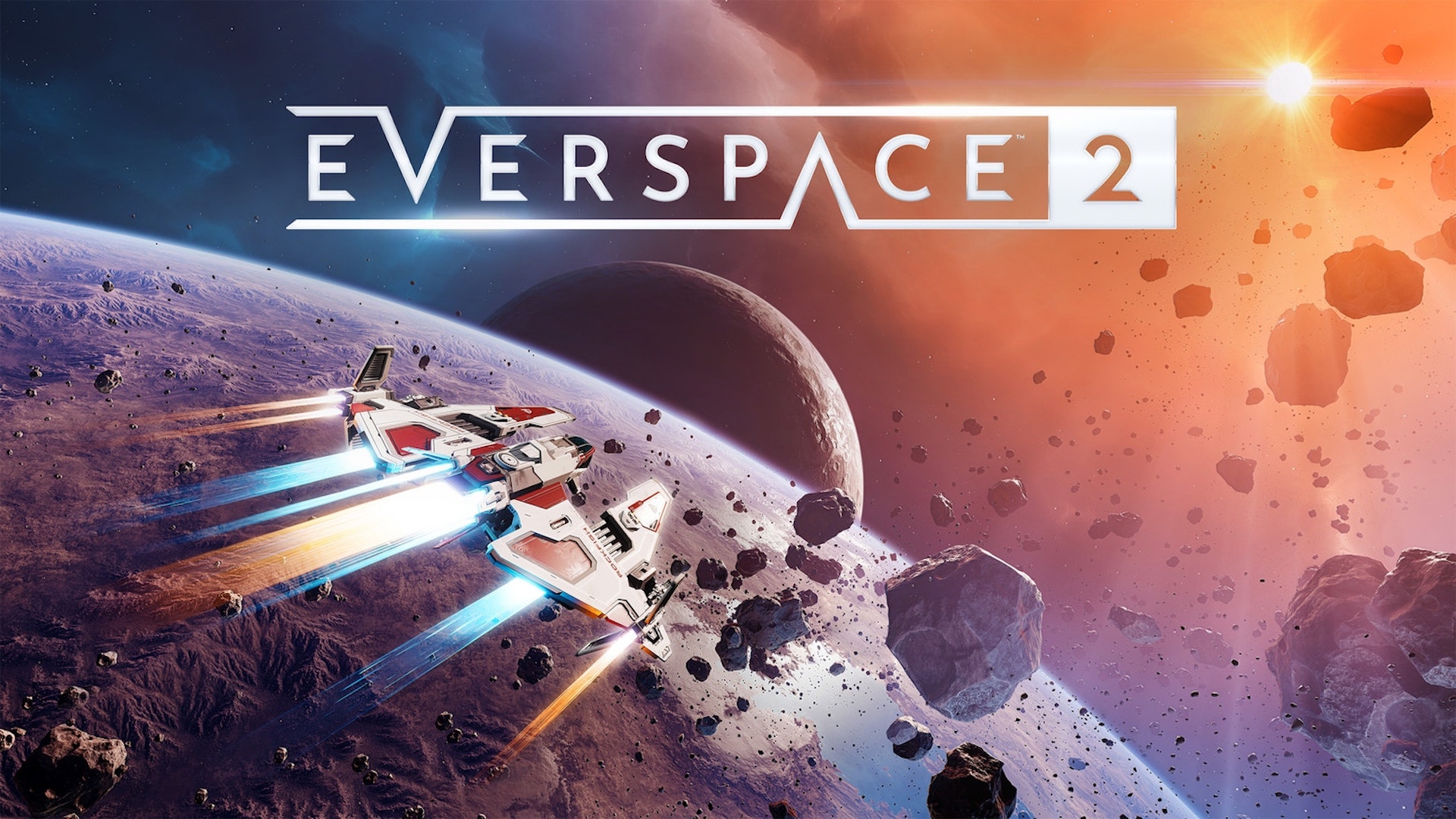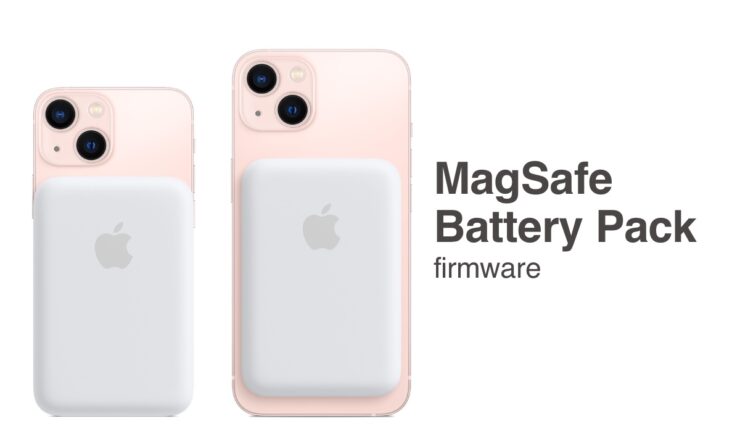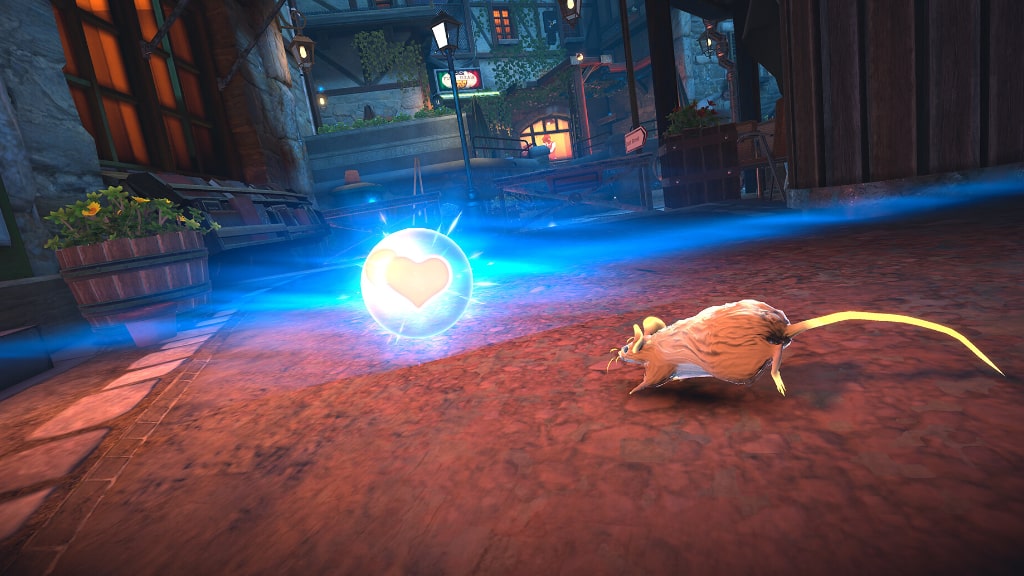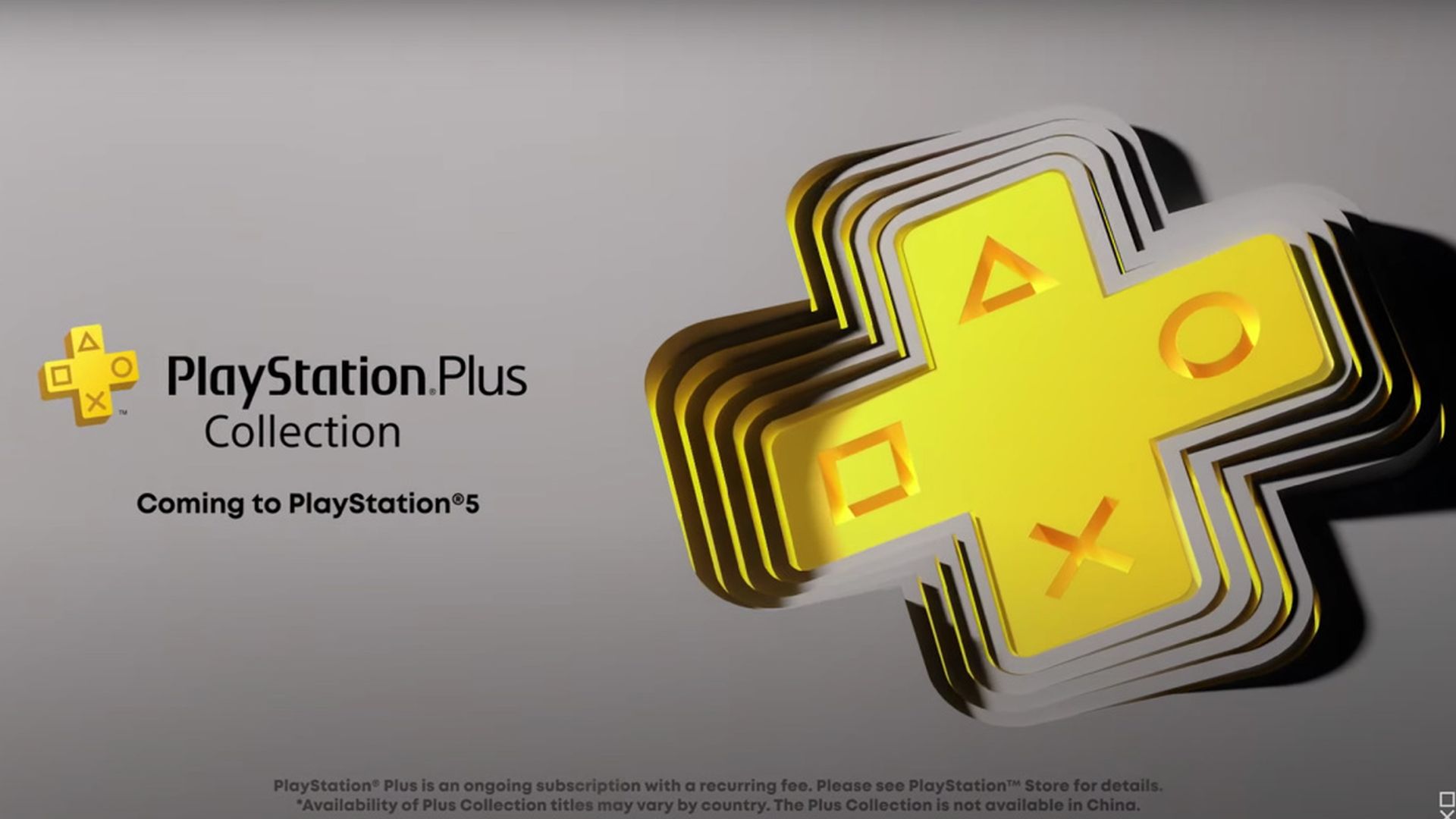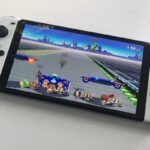
The new Nintendo Switch (OLED Model) is what the Nintendo Switch should have been like from the very beginning. I’m not even talking about the specific changes from having the larger OLED screen to play on or having an ethernet port built into the dock. Those are both nice to have for different gamers, but really the Switch OLED is just a much nicer and more refined product in general.
While the Joy-Con that slot into the guiding rails on either side of the Switch OLED are identical in form and function (just in a snazzy new off-white colour), the main tablet of the console has been almost completely revised. Sure, it’s an almost identically sized black slab, but you can tell how deeply Nintendo has reconsidered and reengineered almost every element of its design. The 7″ OLED screen is clearly much larger on the face of the console, cutting down on the black frame around the original 6.2″ panel and now surrounded by a much skinnier section of glossy plastic.
Around the back, the kickstand now runs the entire width of the console, able to be set to any angle you like up to around 160º and with a pair of very firm hinges that take a considerable amount of space in the console’s main body. That means that the air intakes now have to run along the bottom edge of the console. The fan vent at the top has a smaller pill-like grill similar to the Switch Lite, compared to the gaping hole that the original design gave into the heatsink. It will take far more for this vent to warp and crack, especially with the lower powered Switch chipset all consoles have had since 2019. The one oddity is the pair of rubber nubbins that lift the console off a surface, but can easily end up under your fingers when playing handheld.
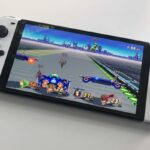
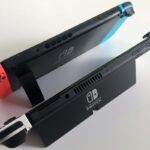
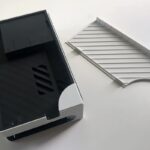
Similar tweaks and changes have been made to the dock. Again, it still has an almost identical design as the original (but again, it’s off-white now), but corners have been rounded off, the inner plastic is now smooth and glossy so you won’t have to fret about hard plastic edges scuffing your new screen, and the back panel can be removed completely instead of being on a hinge. That also reveals that the USB 3.0 port of old has been replaced with an ethernet port. Sure, you lose a third port for charging or connecting wired controllers, but the overwhelming use here will have surely been for ethernet dongles for more reliable internet connections. That point works exactly as expected, guaranteeing I’m getting the best speeds on both new and old Switch models, when WiFi can all too easily drop to the much slower 2.4Ghz range on a dual band router.
But if you’re buying this new Switch model, you’re doing so for one reason and one reason alone: the OLED screen. Turning it on for the first time, the screen immediately feels fuller and everything you view on it is more colourful and saturated. Greens are greener, reds redder, blues… well, you get the idea. Everything you play on it just ‘pops’ in a way that pleases the brain. It’s the same reason why TVs have a dedicated showroom mode to try and sell how vibrant and bright they can be to you.
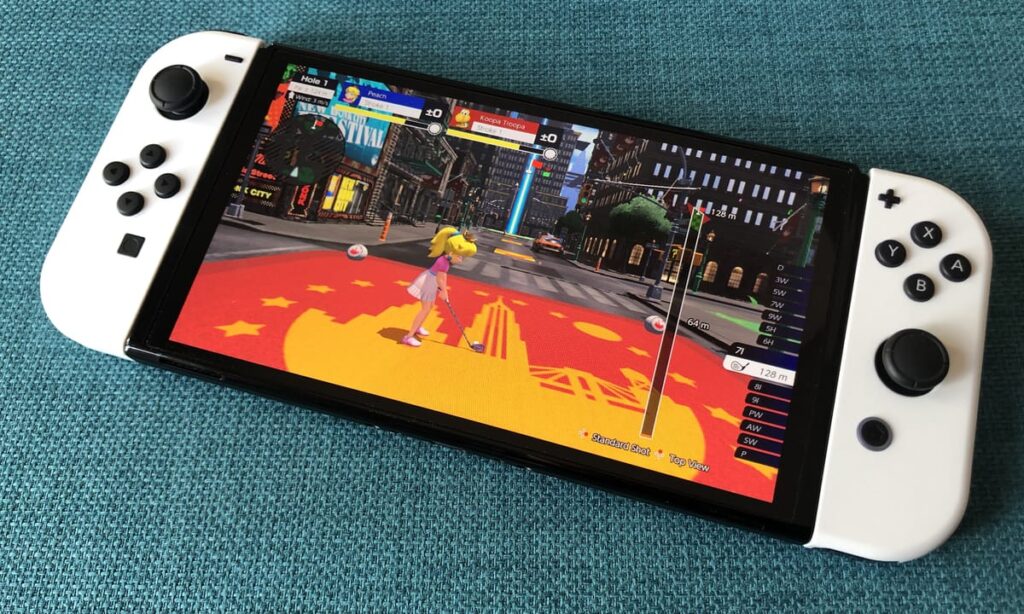
It’s almost too much at times, especially if you turn the brightness up, and things like the orange sidebar of the eShop actually becomes more difficult to read because of the minimal contrast to the words written on it. I hope there’s some way that developers can specifically target the Switch OLED’s screen to work around such edge cases, but 99% of the time the new screen is just a joy to play with. Nintendo’s games tend to lead the way on their own consoles, and they continue to look fantastic here, as do indie efforts that don’t need raw power to look good.
The thing is that, outside of screen size, colour saturation and the fit and finish of the console, you’re not getting a different experience on the Switch OLED. The console isn’t any more powerful, so games that have exposed the console’s weaknesses over the past few years do exactly the same here… just that games running at sub-720p resolution like Wolfenstein II: The New Colossus or Apex Legends are stretched a little bigger on the face of the machine. Four years into the console’s life, the inherent value of this kind of hardware revision is reduced.
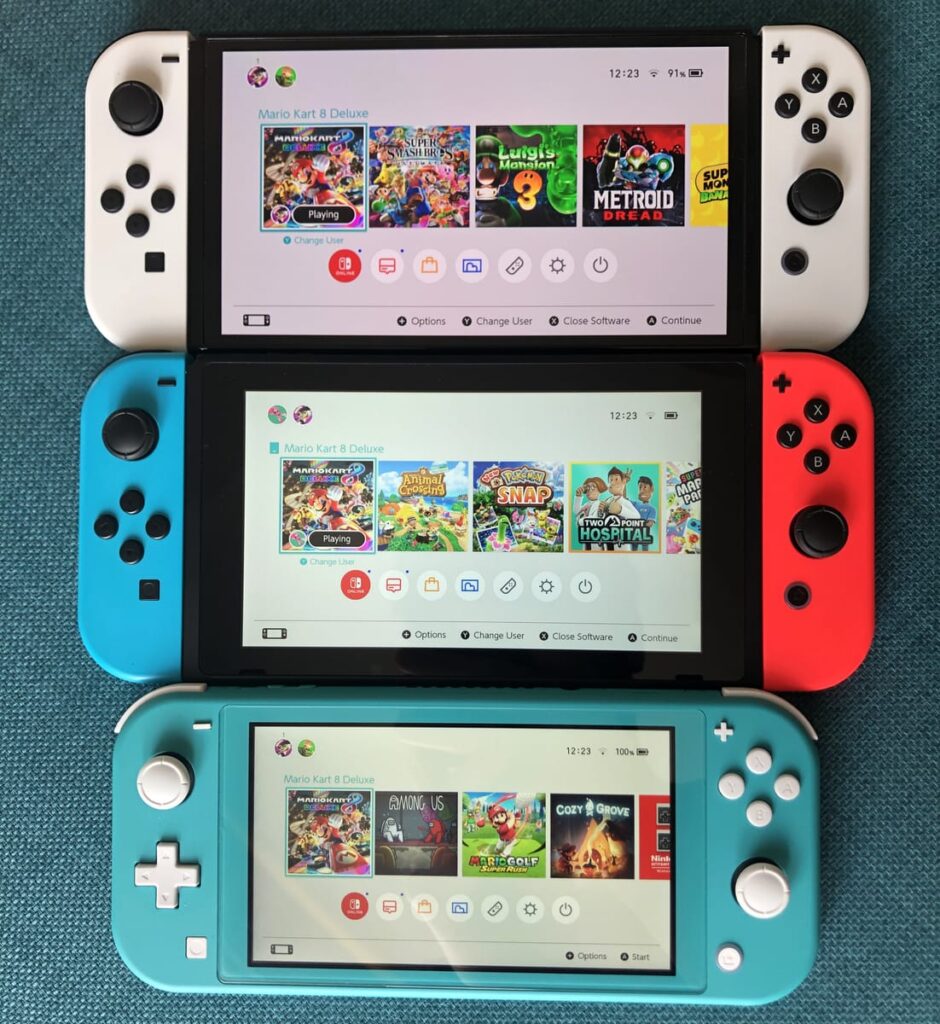
While the screen is obviously a delight, I can honestly say that picking up my original 2017 Switch didn’t cause me to fall off my chair in shock at the difference. Perhaps I subconsciously just held the console a tiny bit closer to my face or the Switch OLED further away, but I’m also someone that can also pick up and happily swap to game on a Switch Lite without batting an eyelid. Your mileage will naturally vary. Going back and forth between the two in a direct comparison, the original Switch is certainly that much more muted in colour and there is a more noticeable framing around the screen, but if you don’t have the two side by side? You can’t miss what you don’t have.

